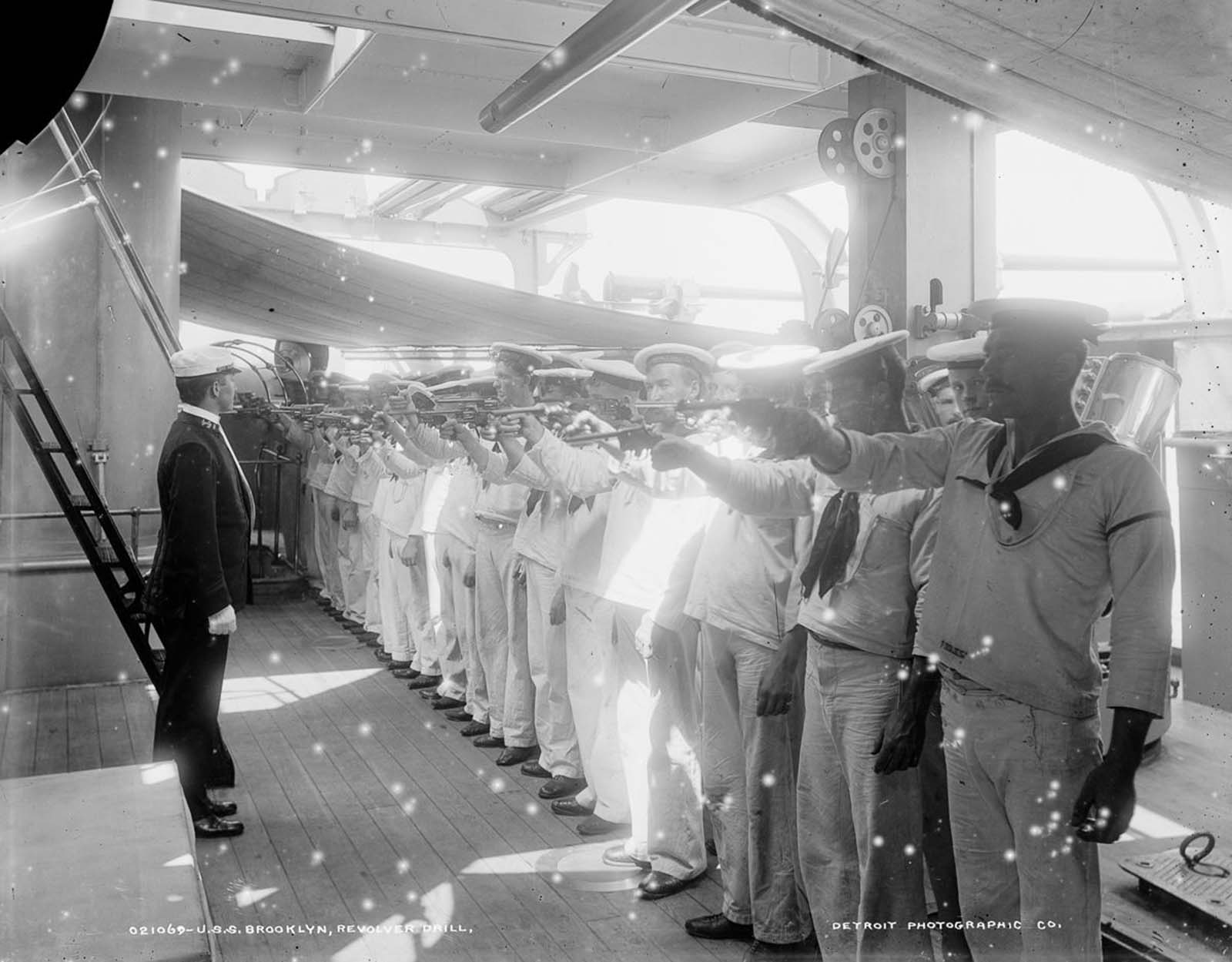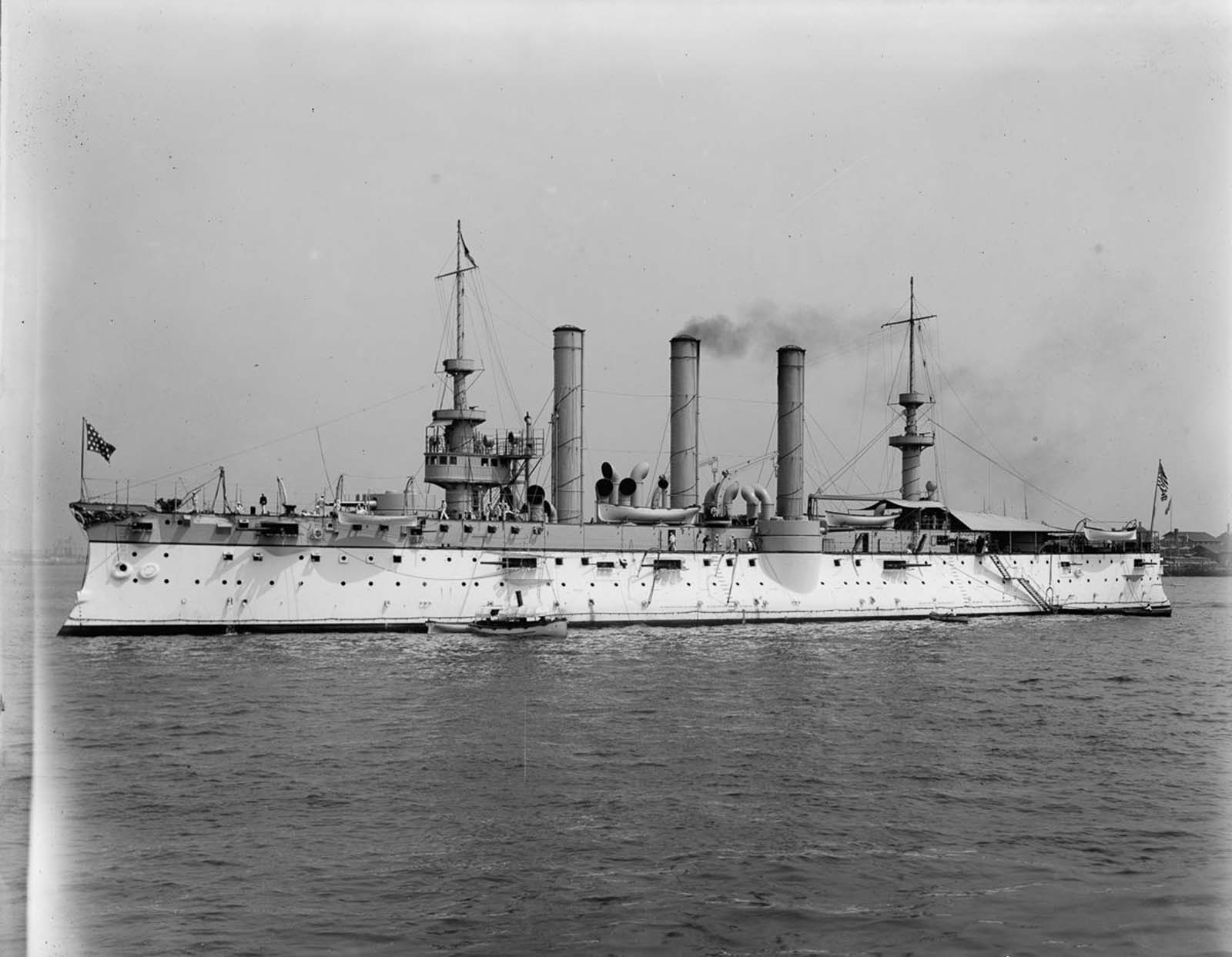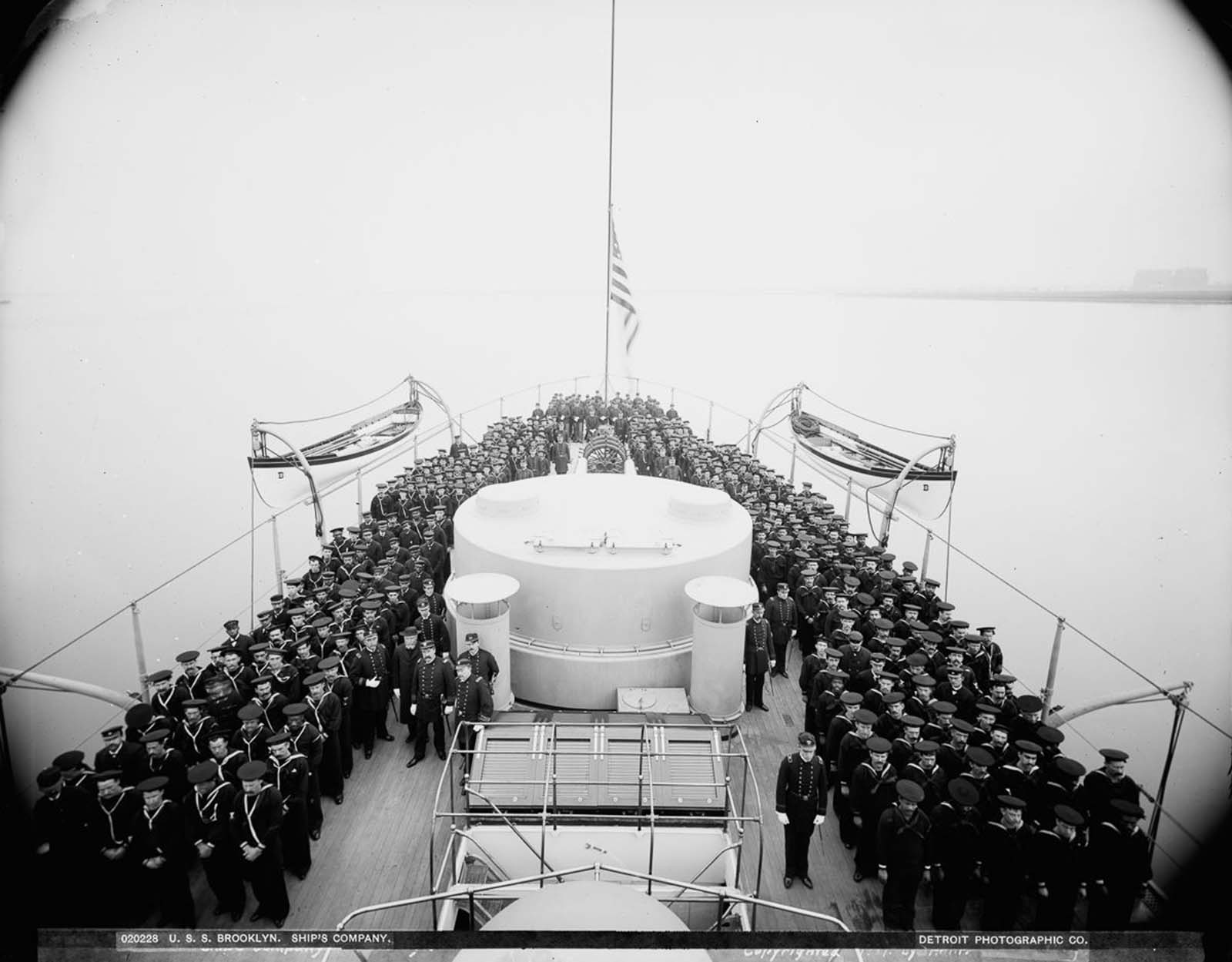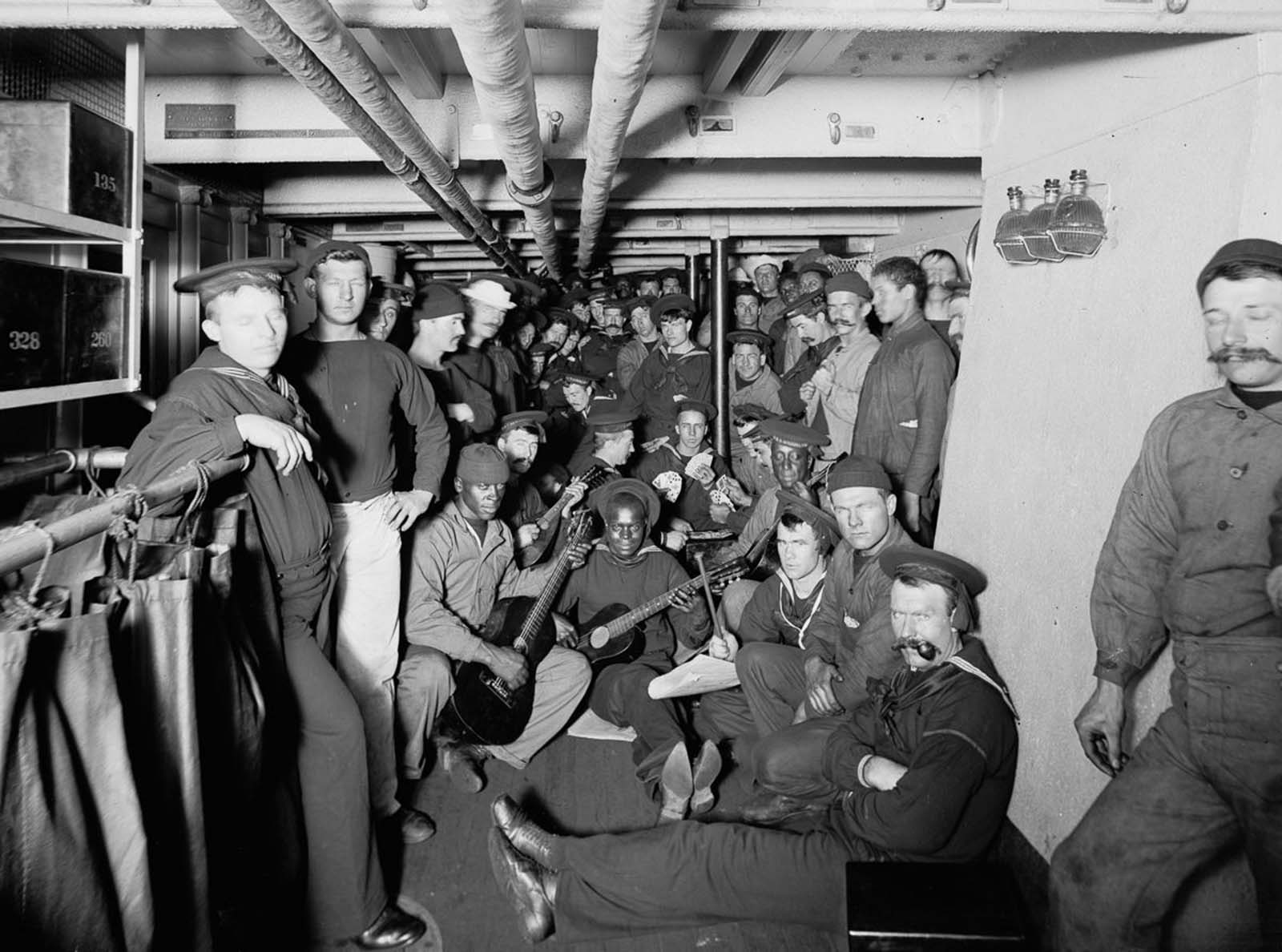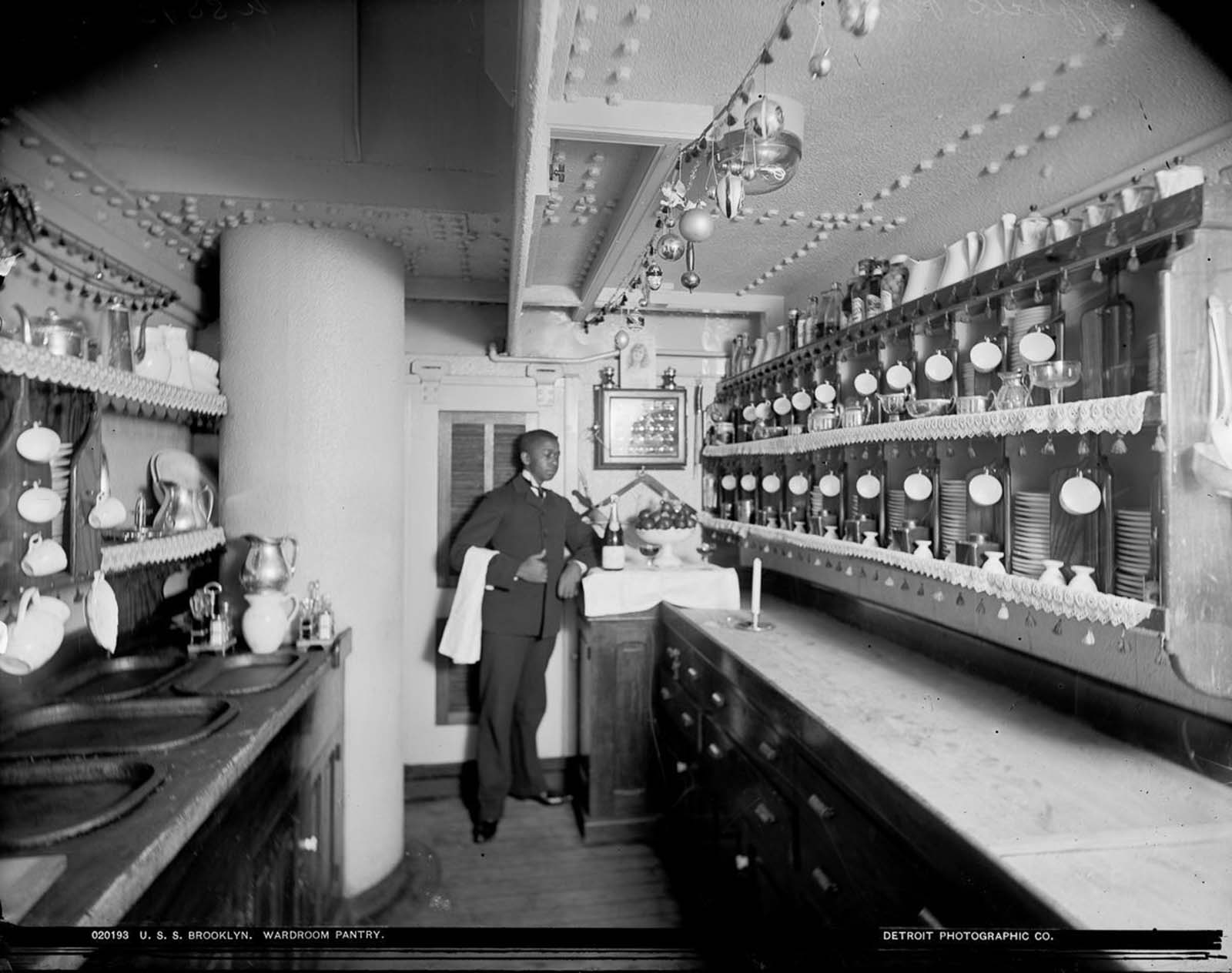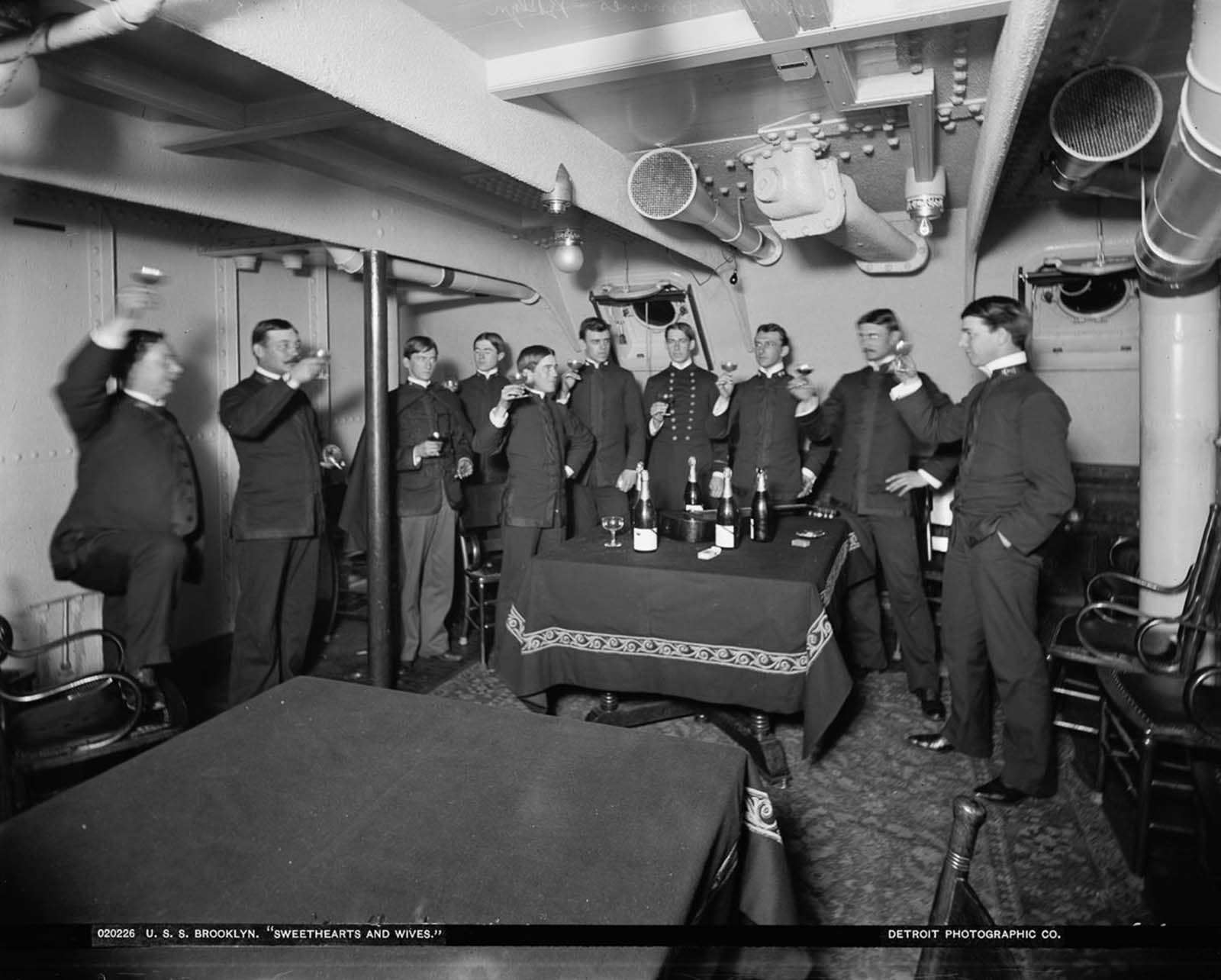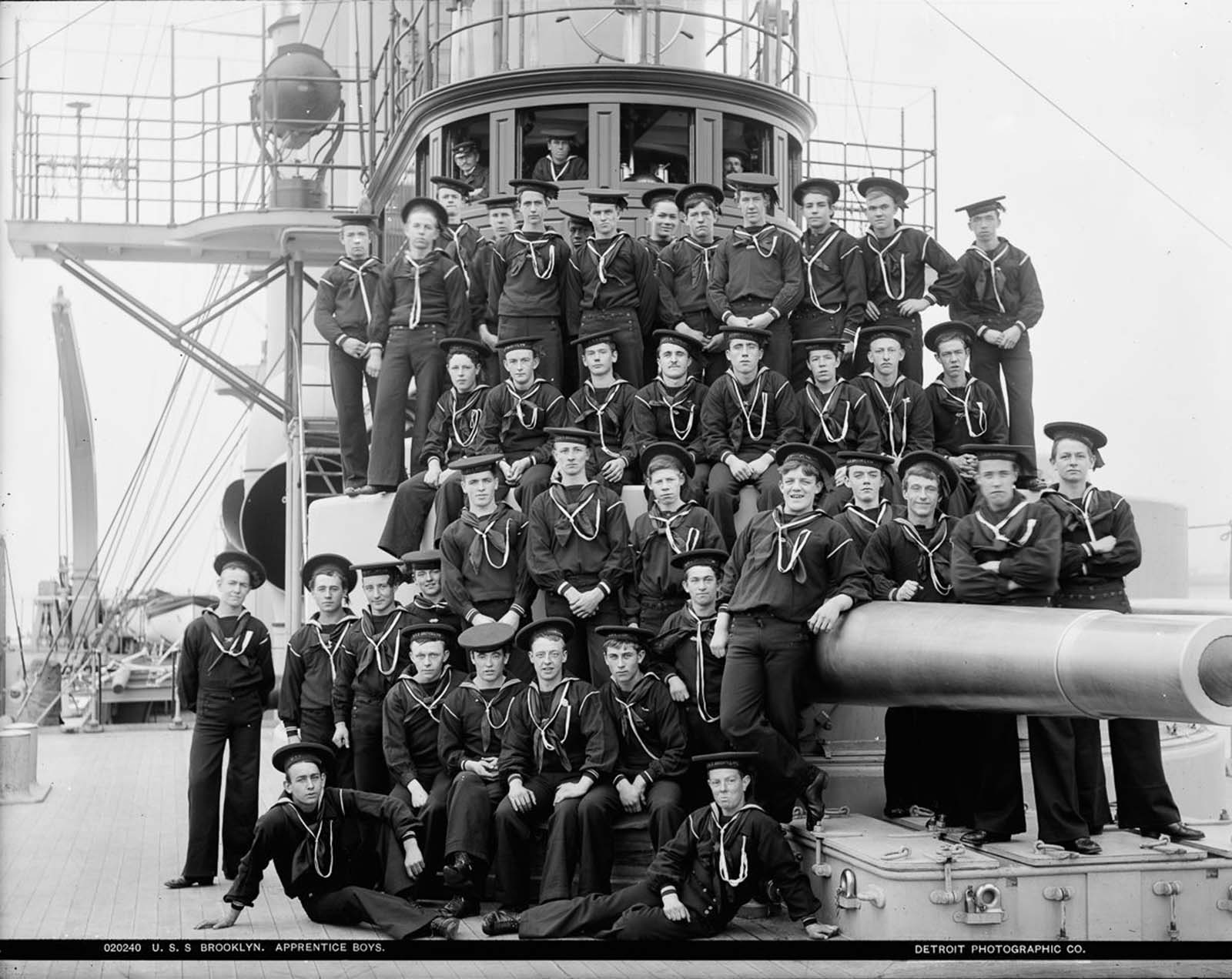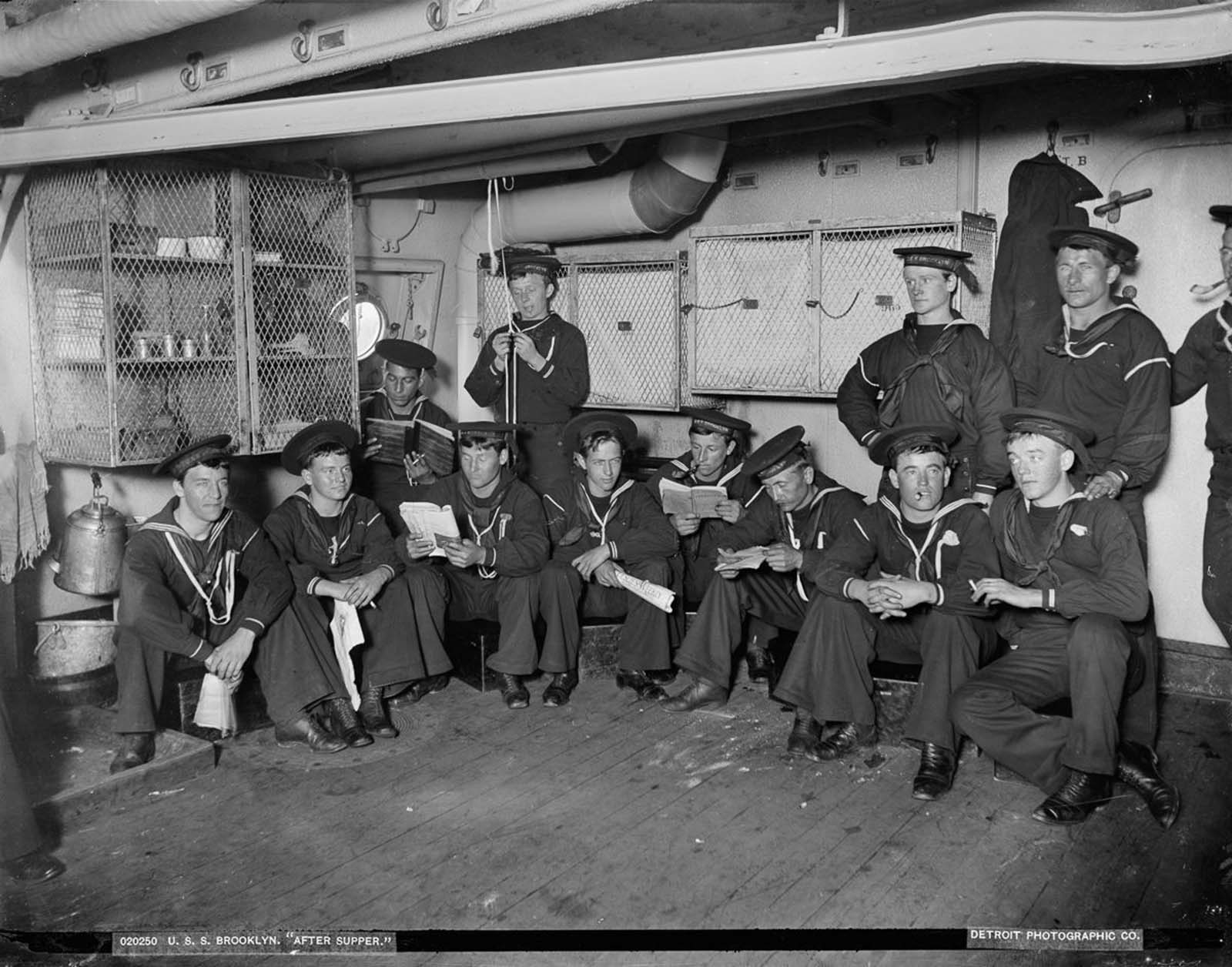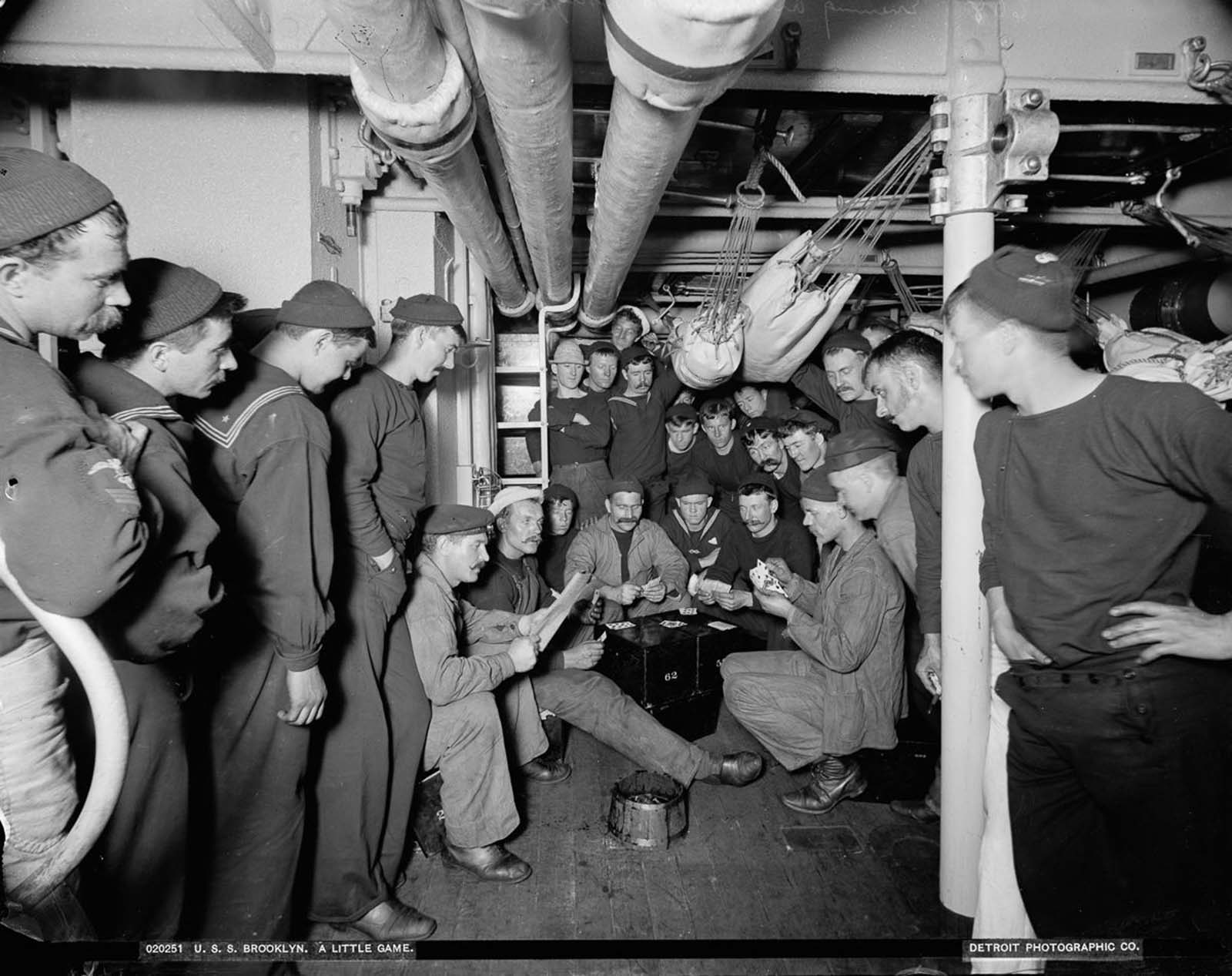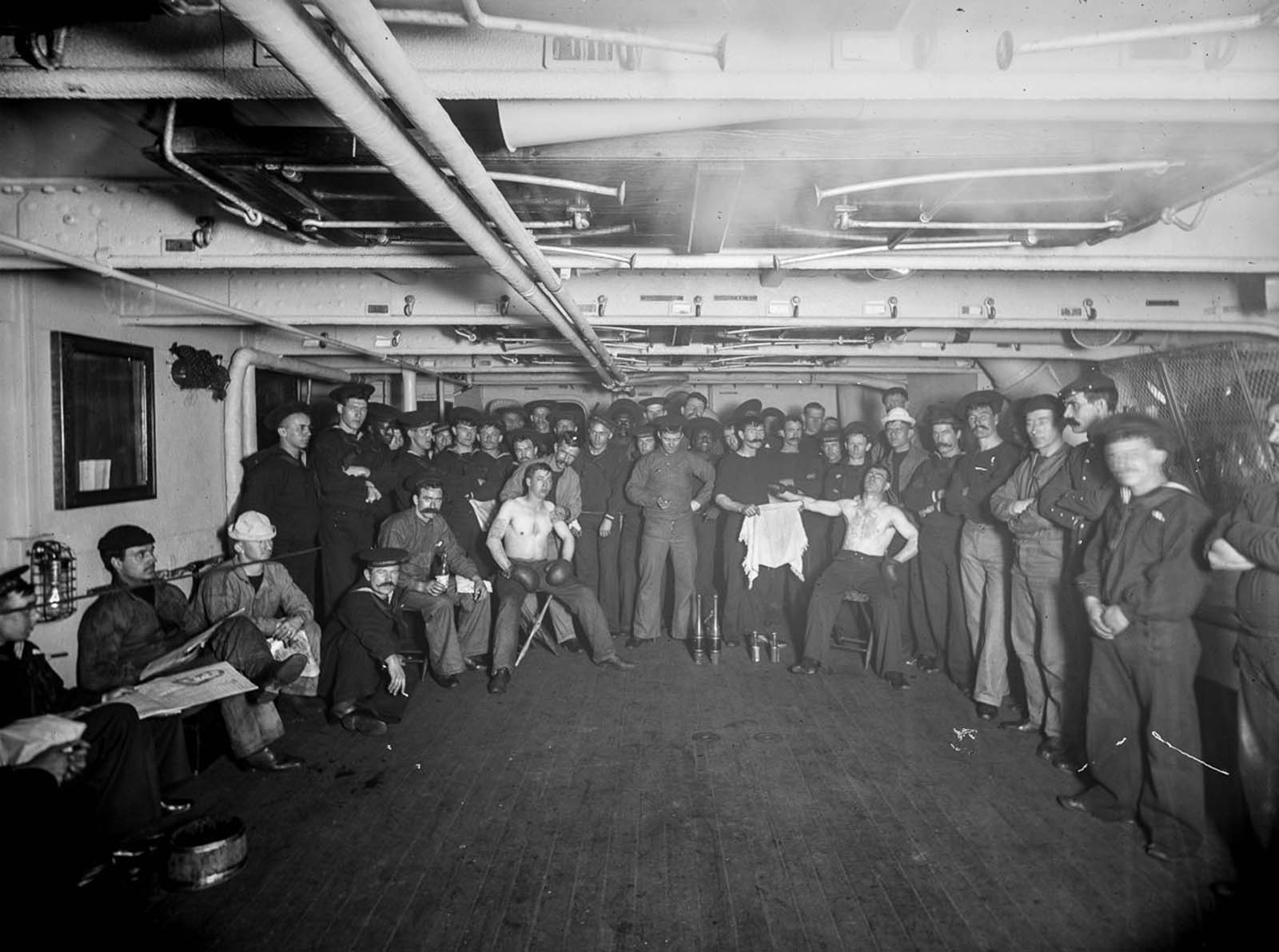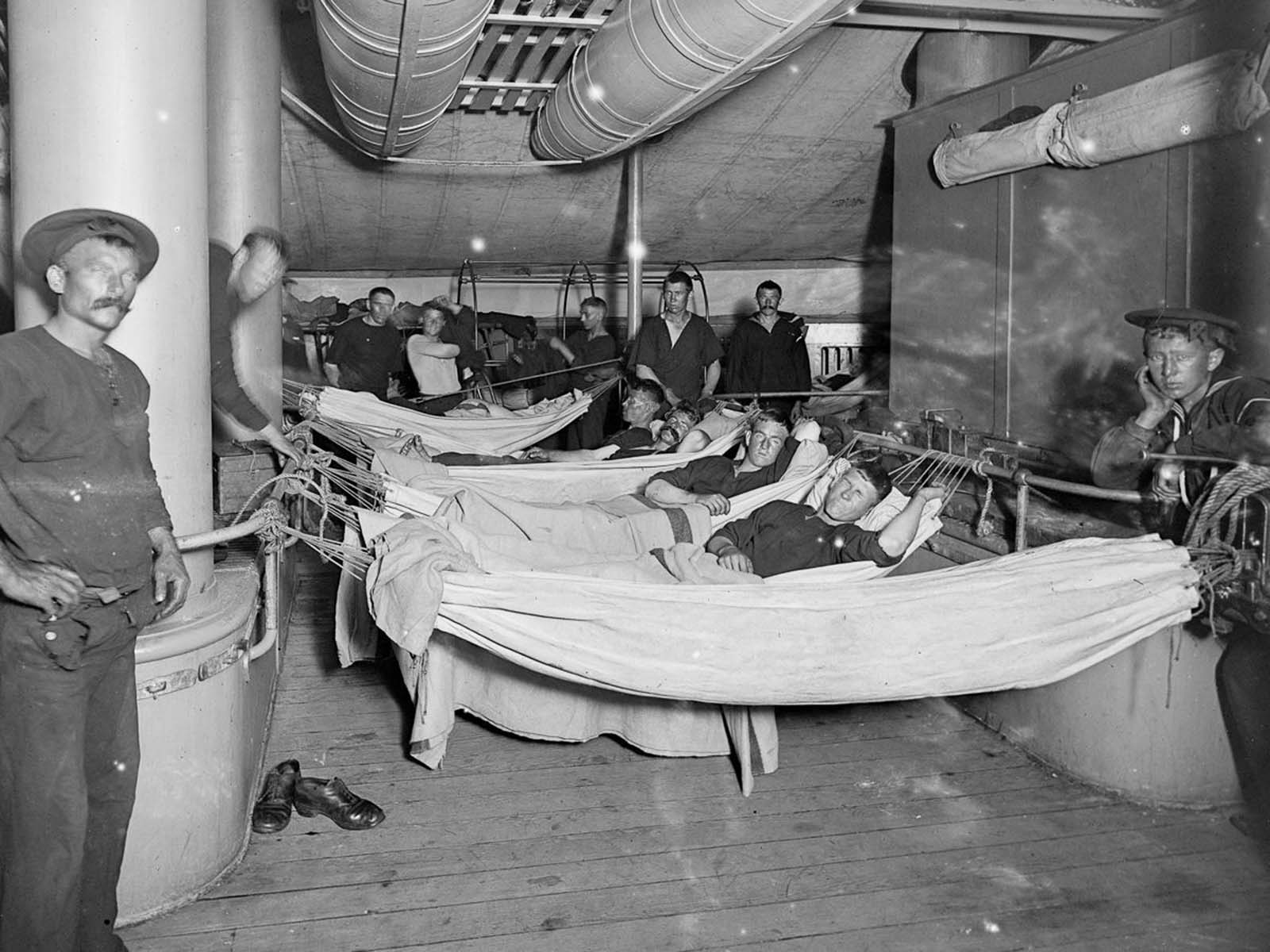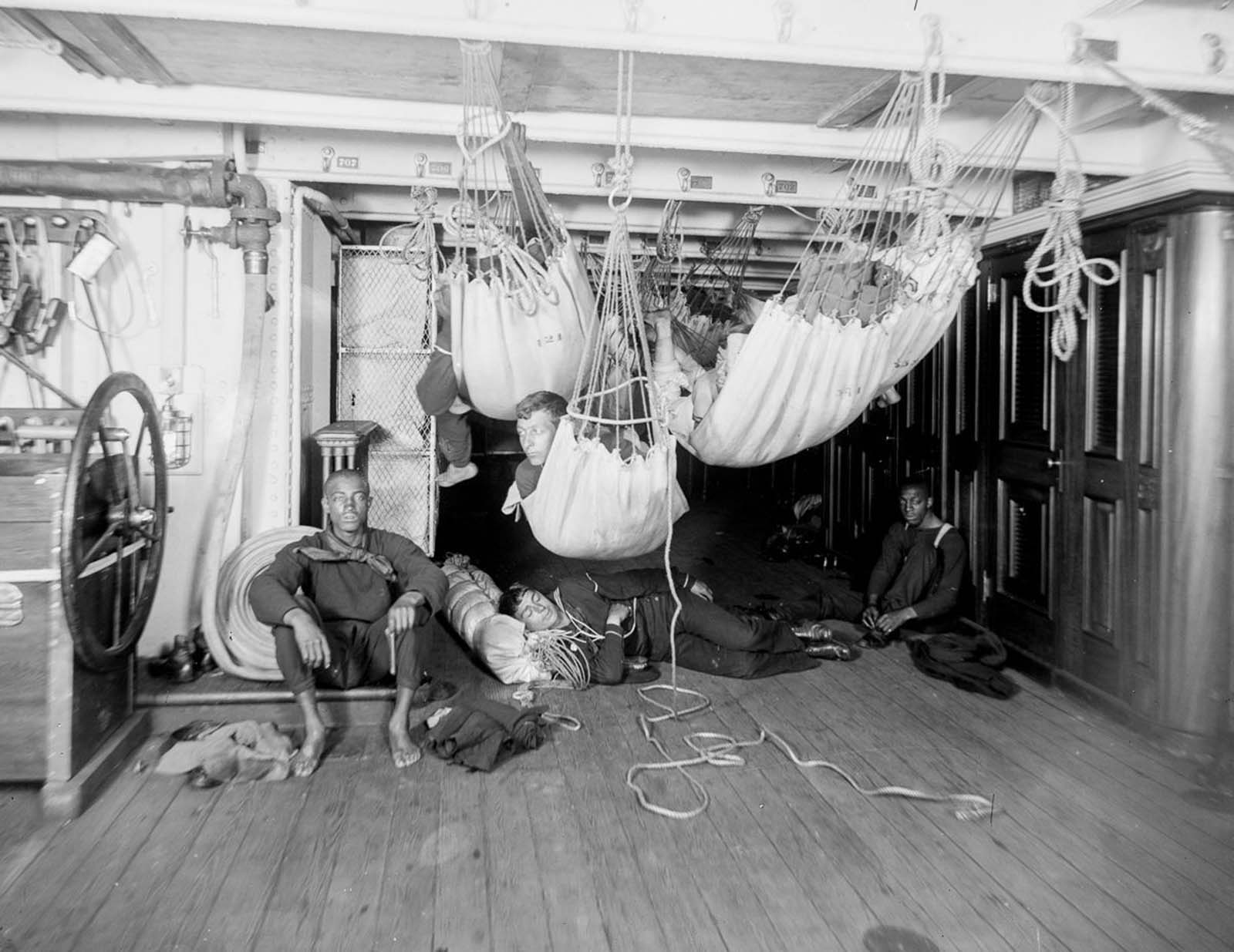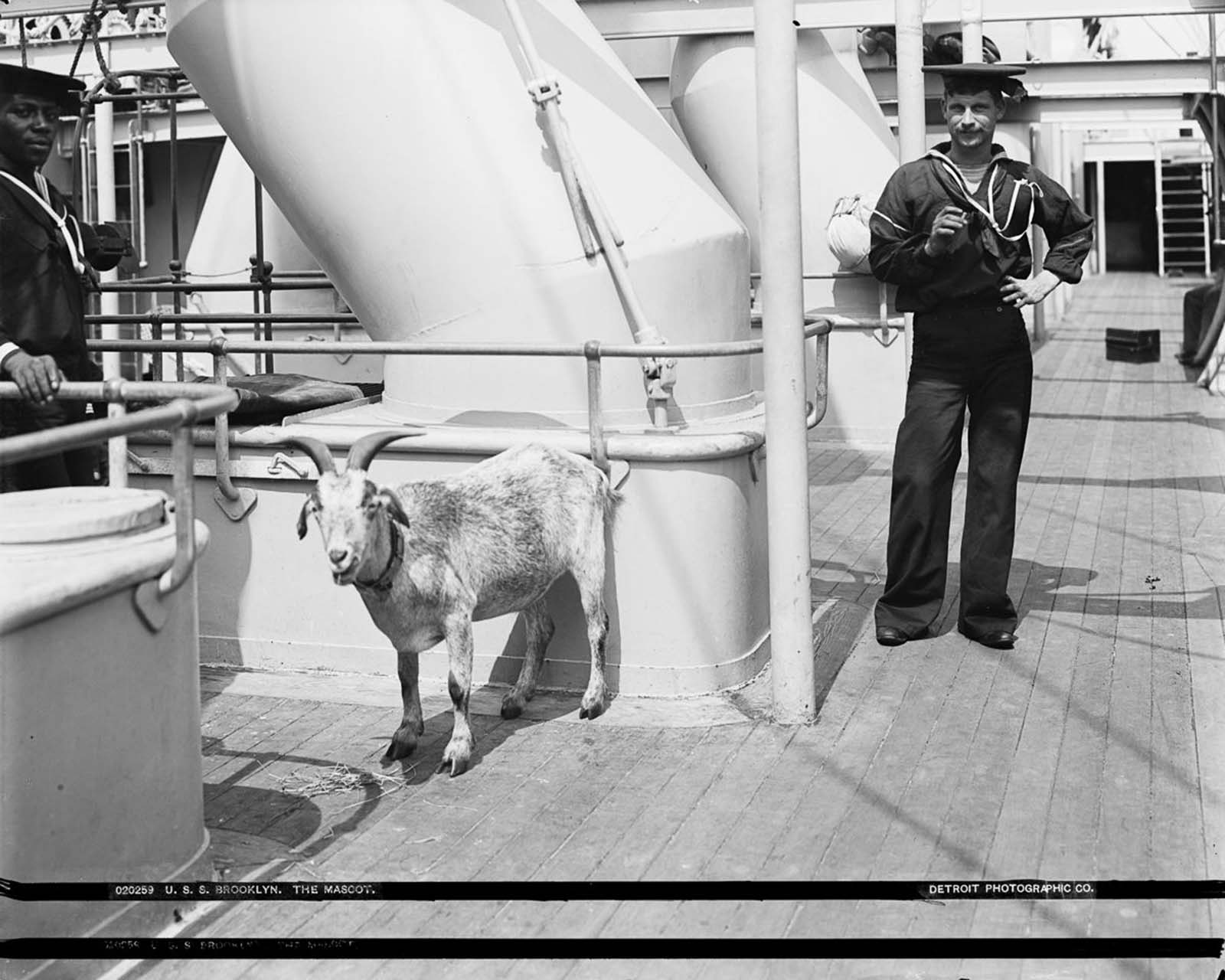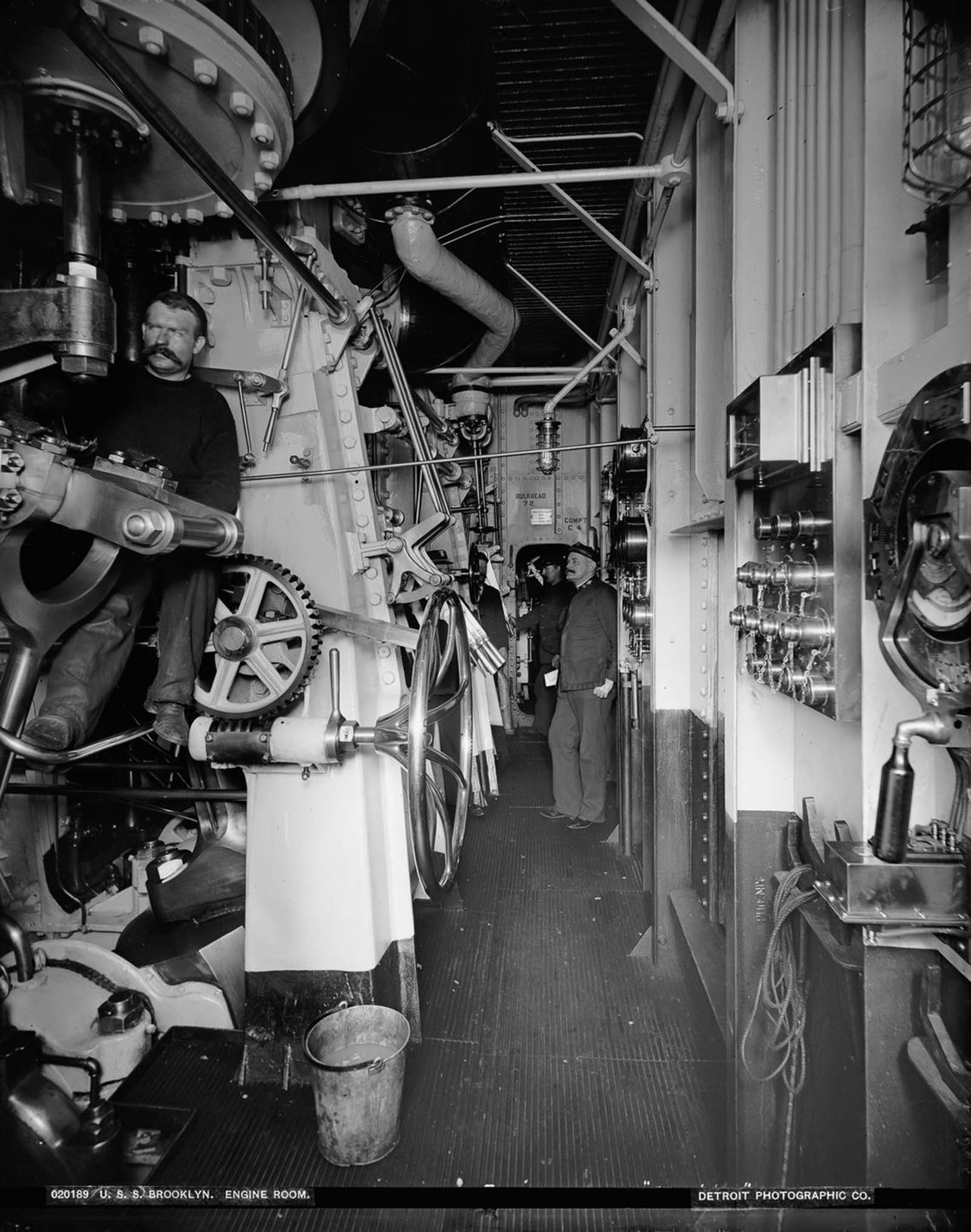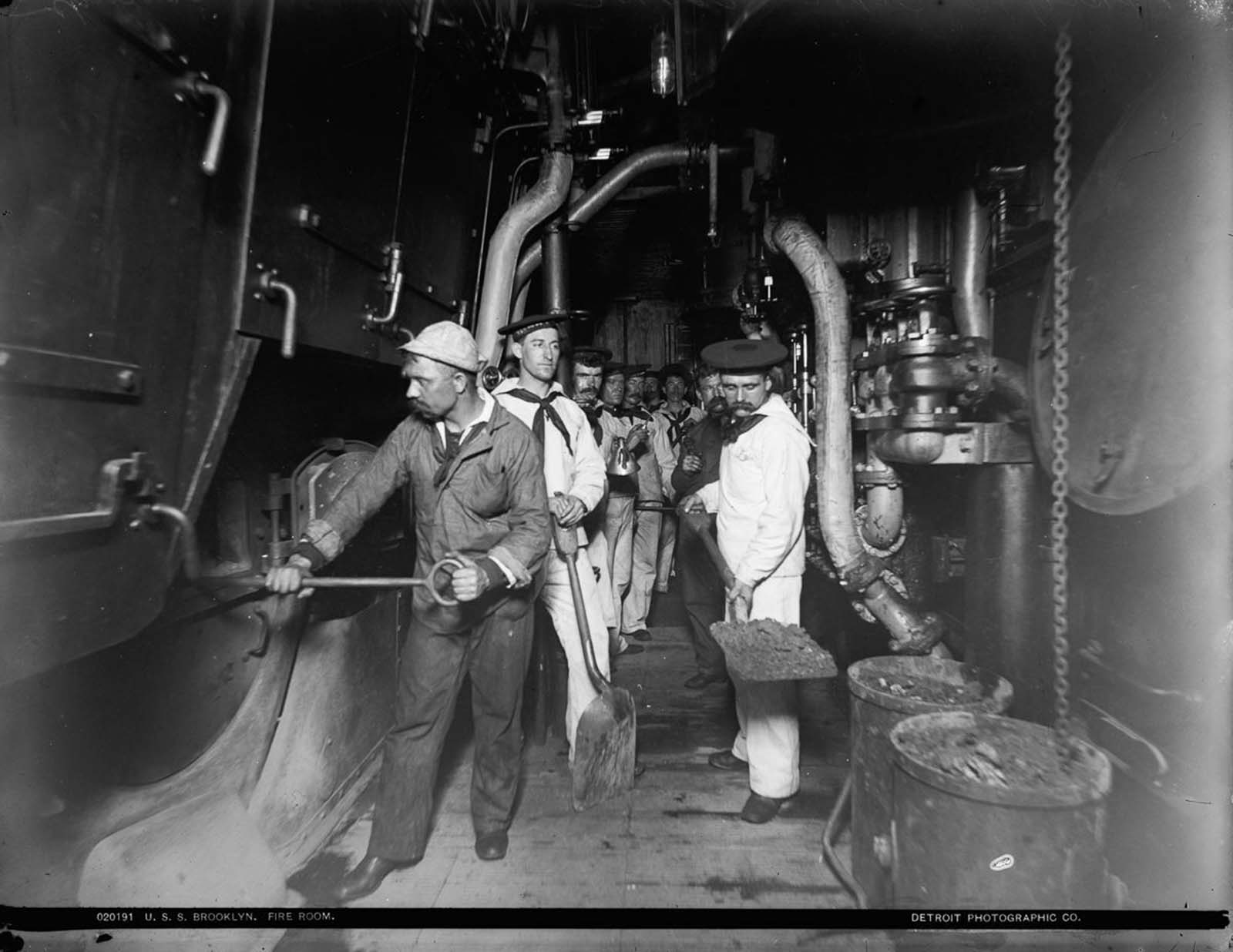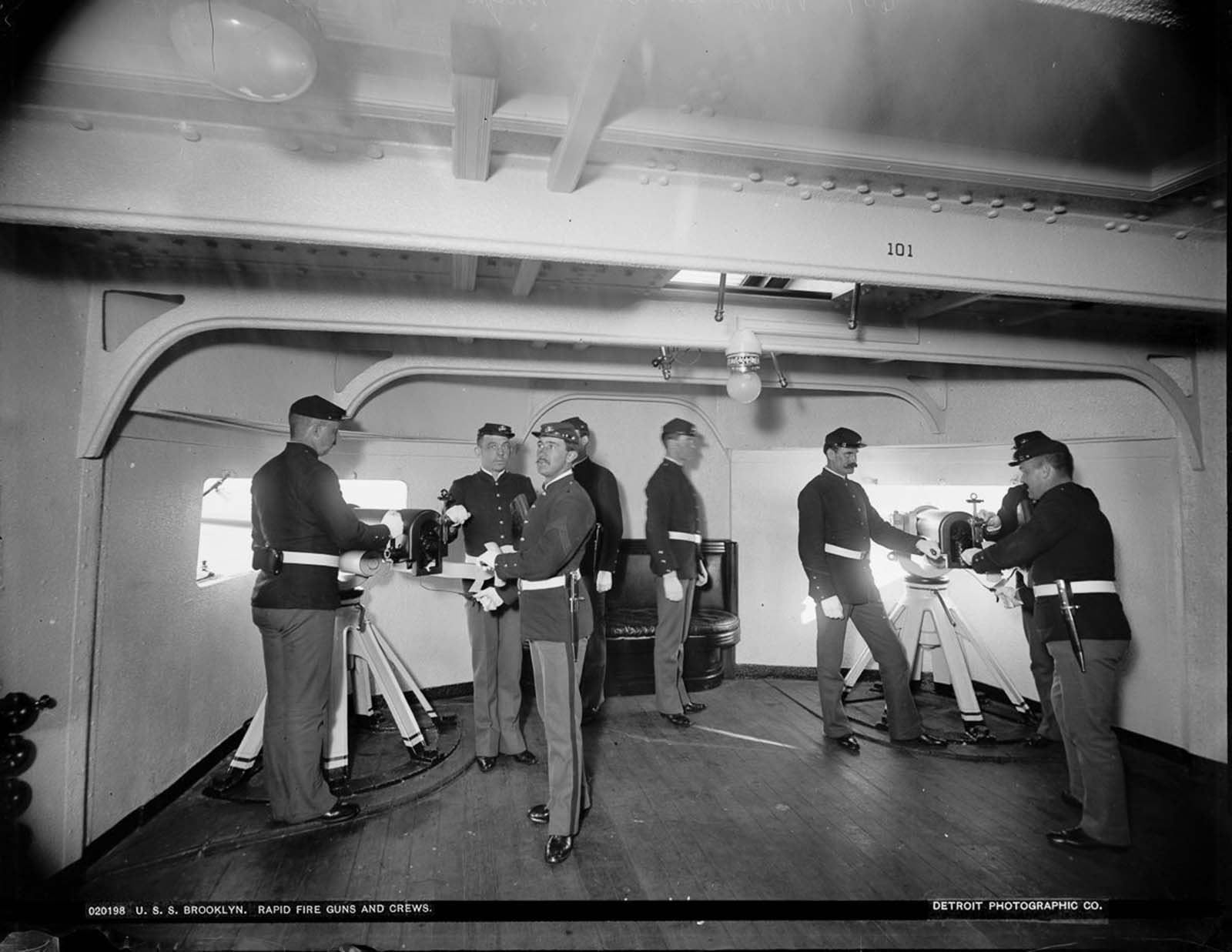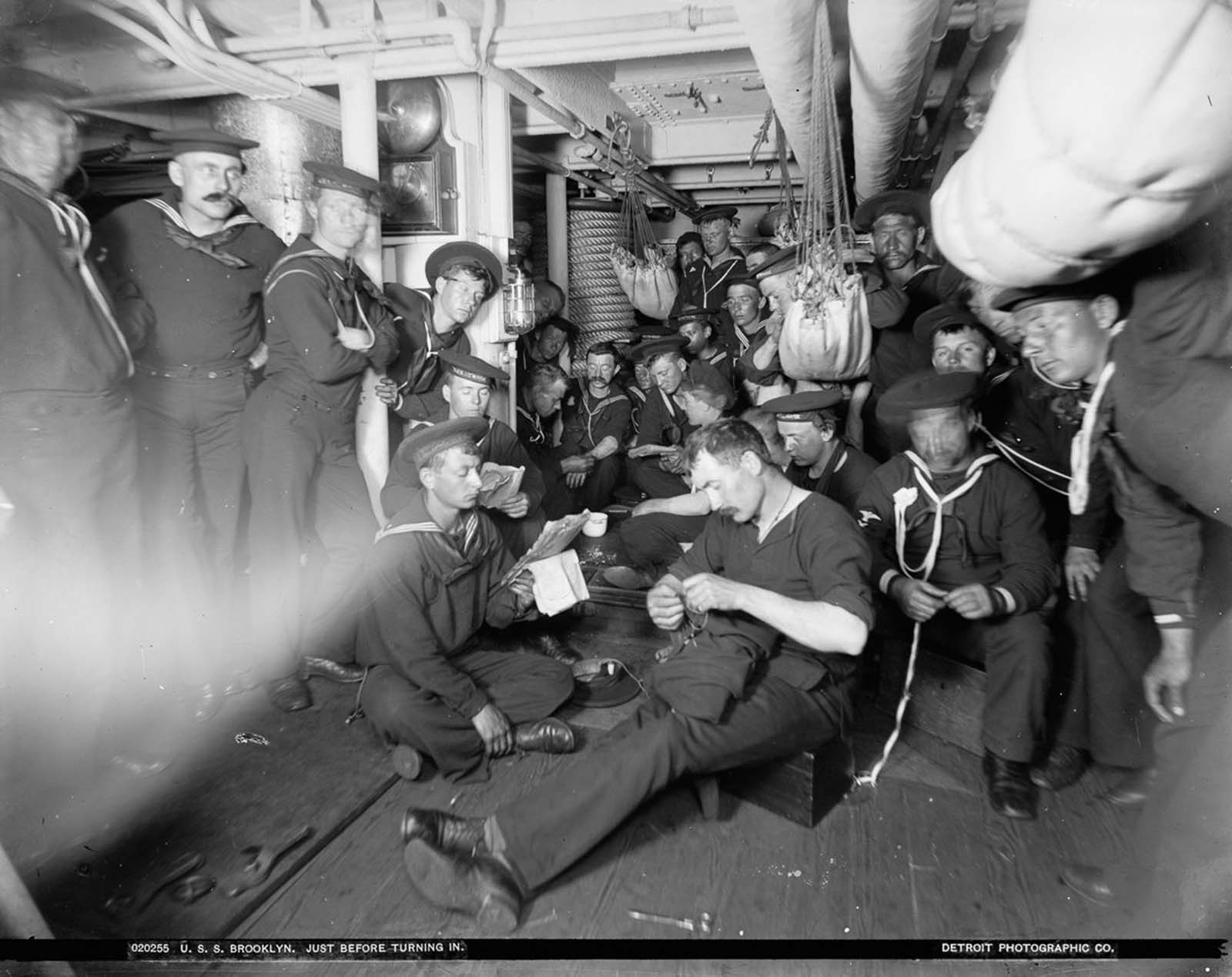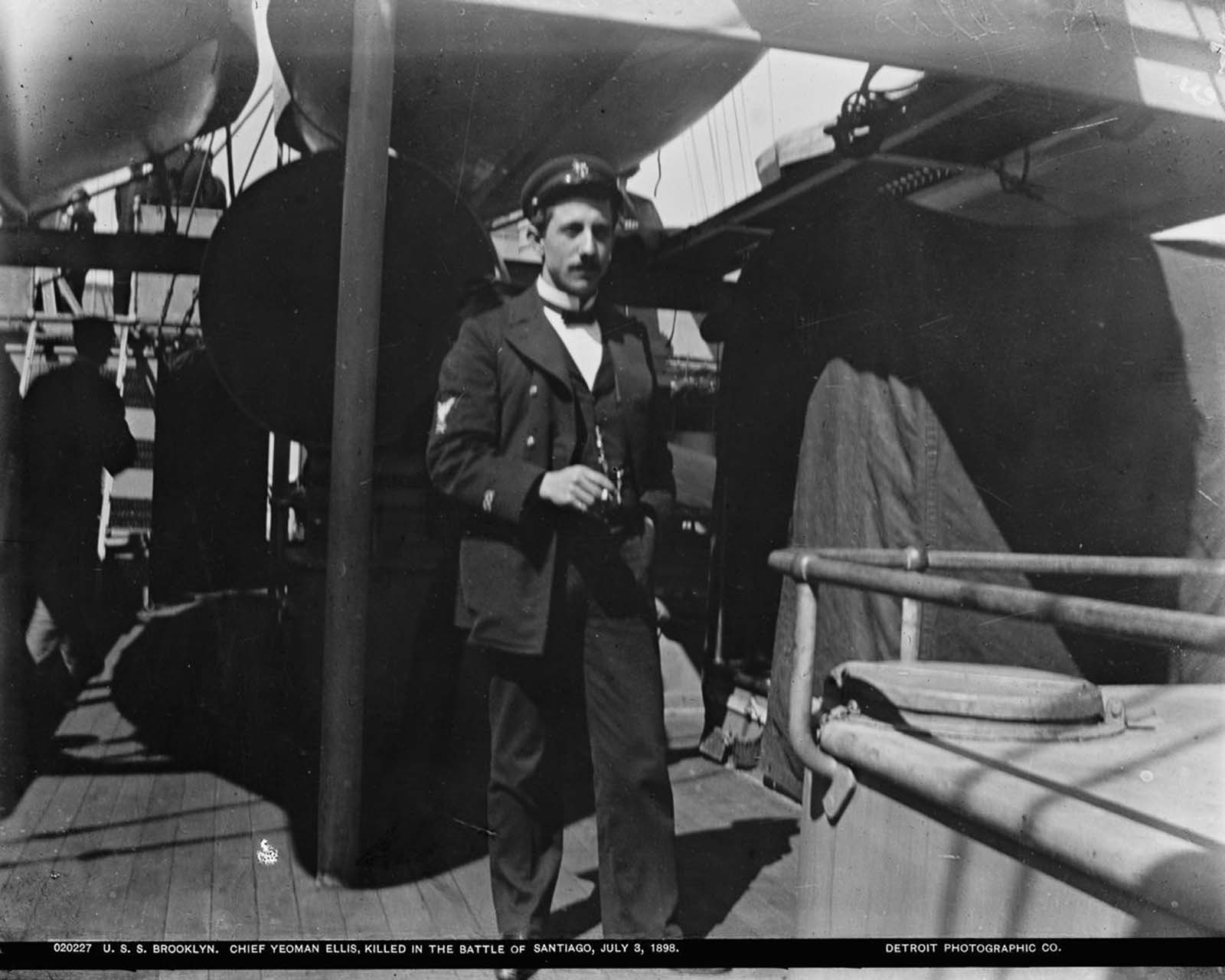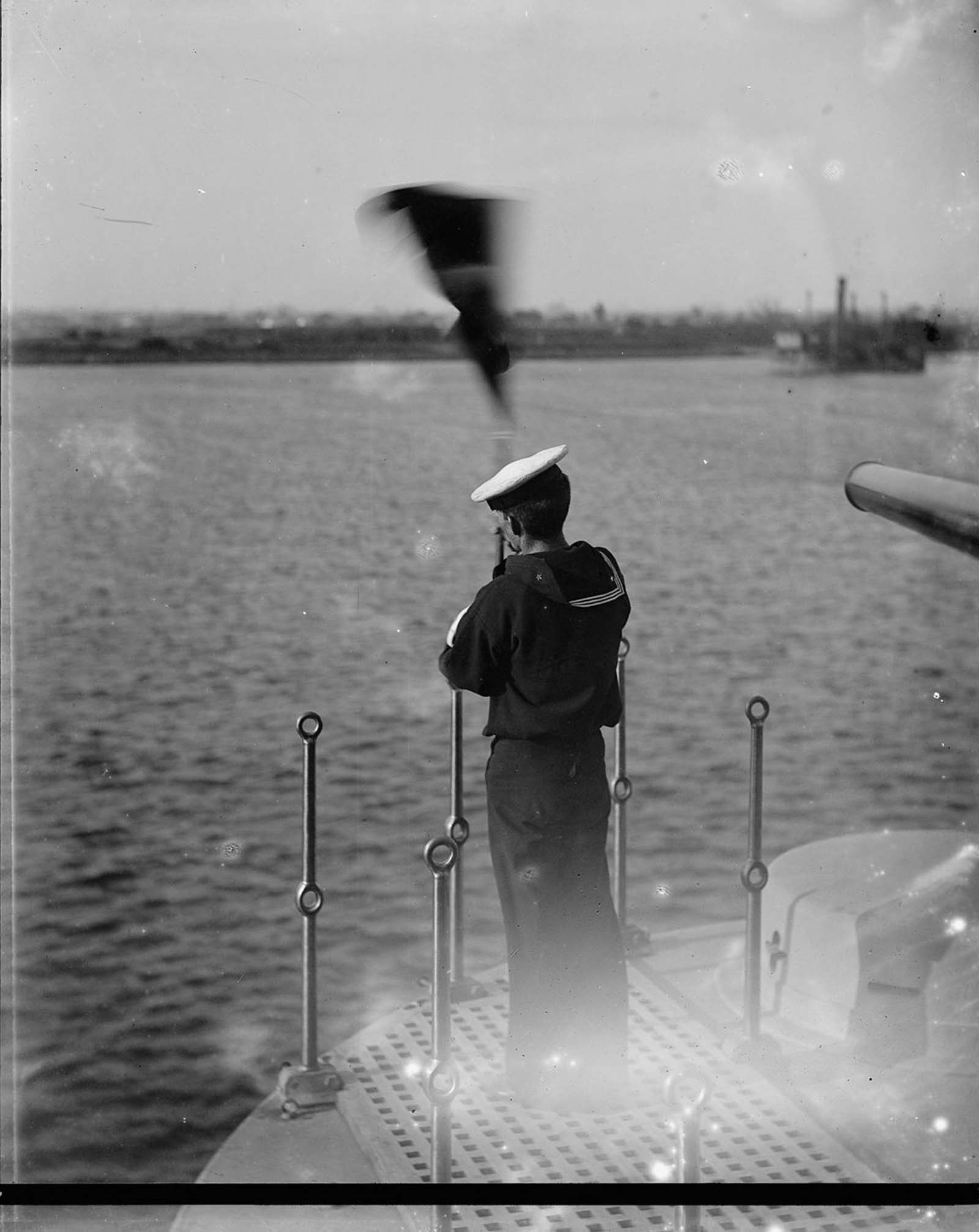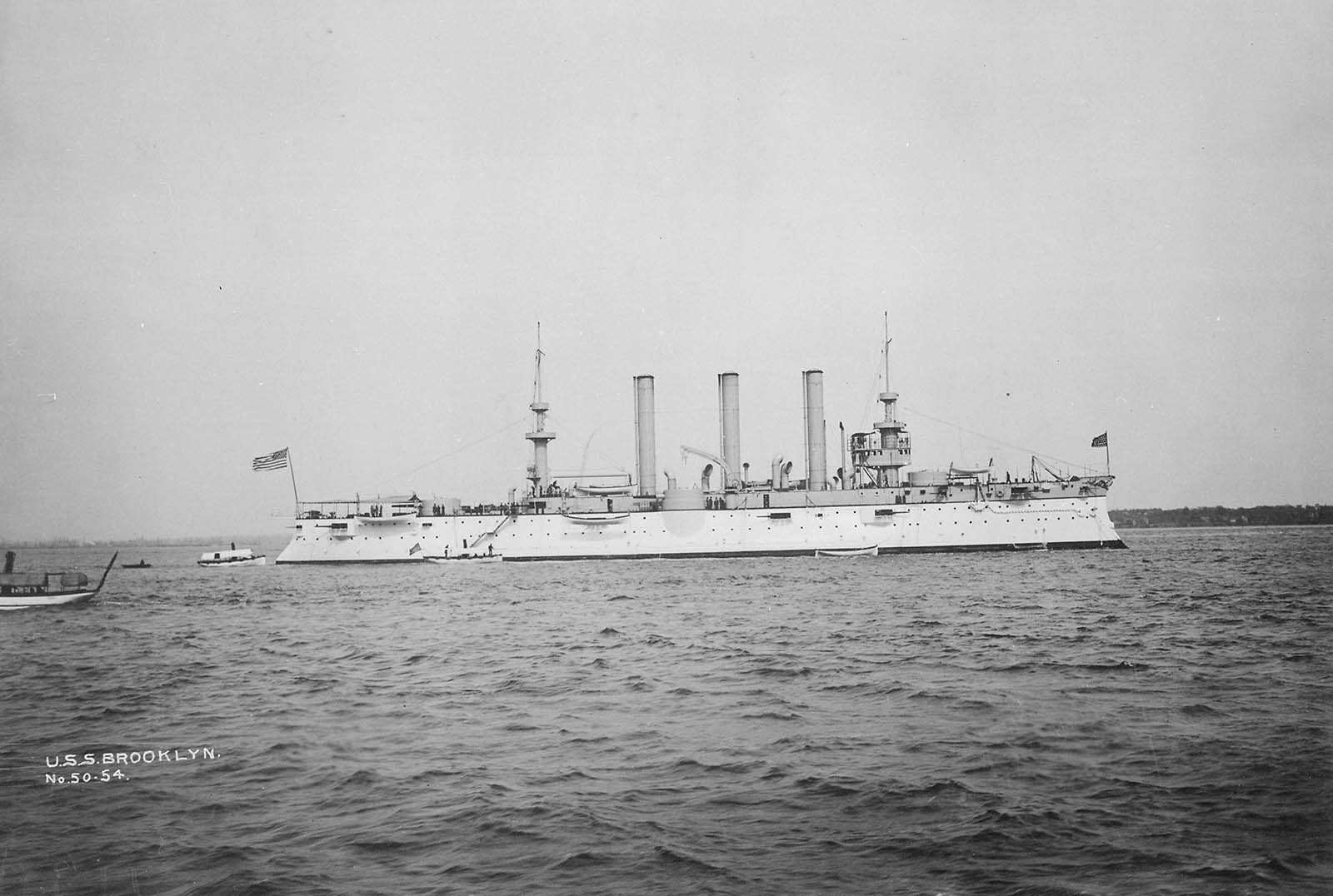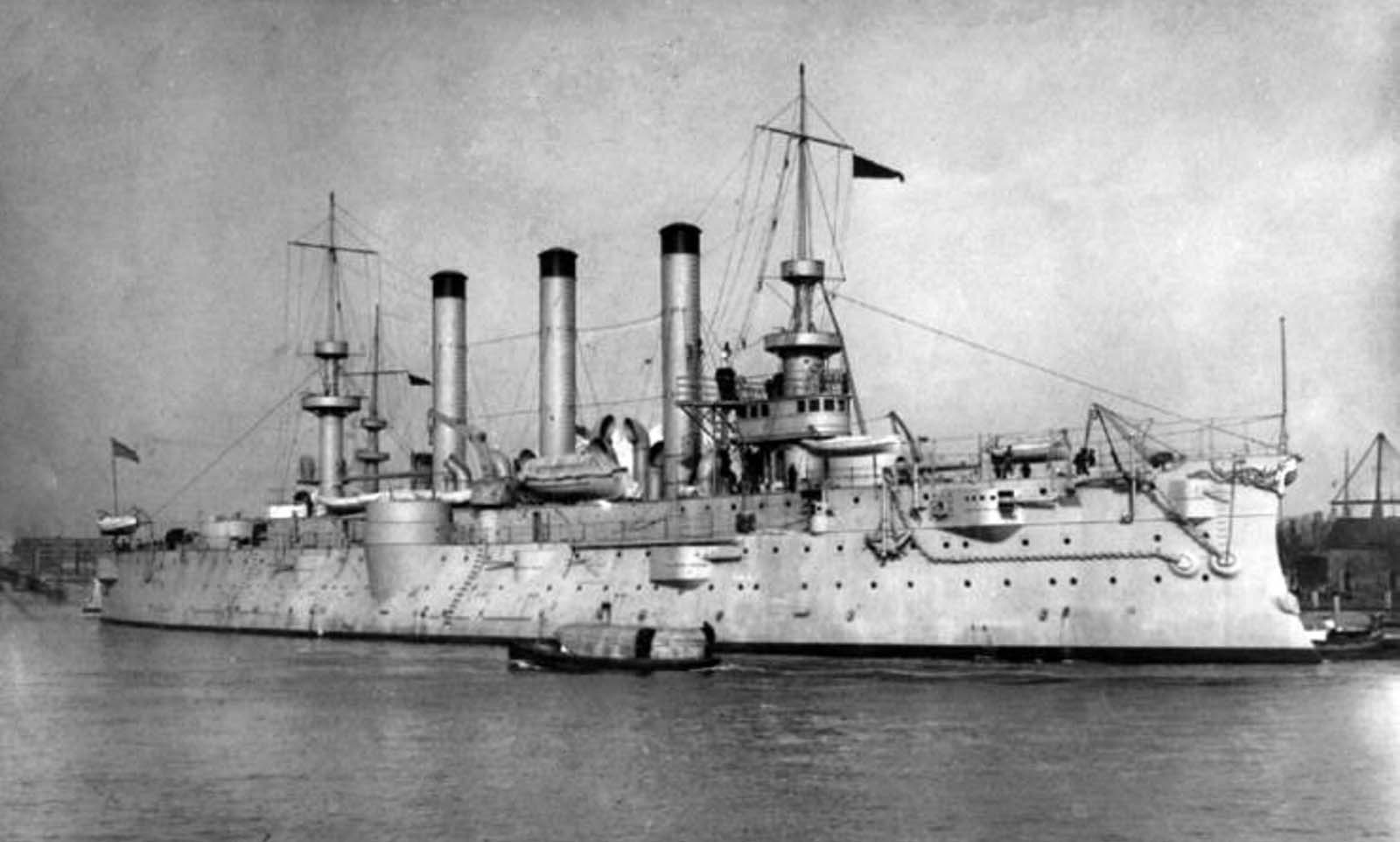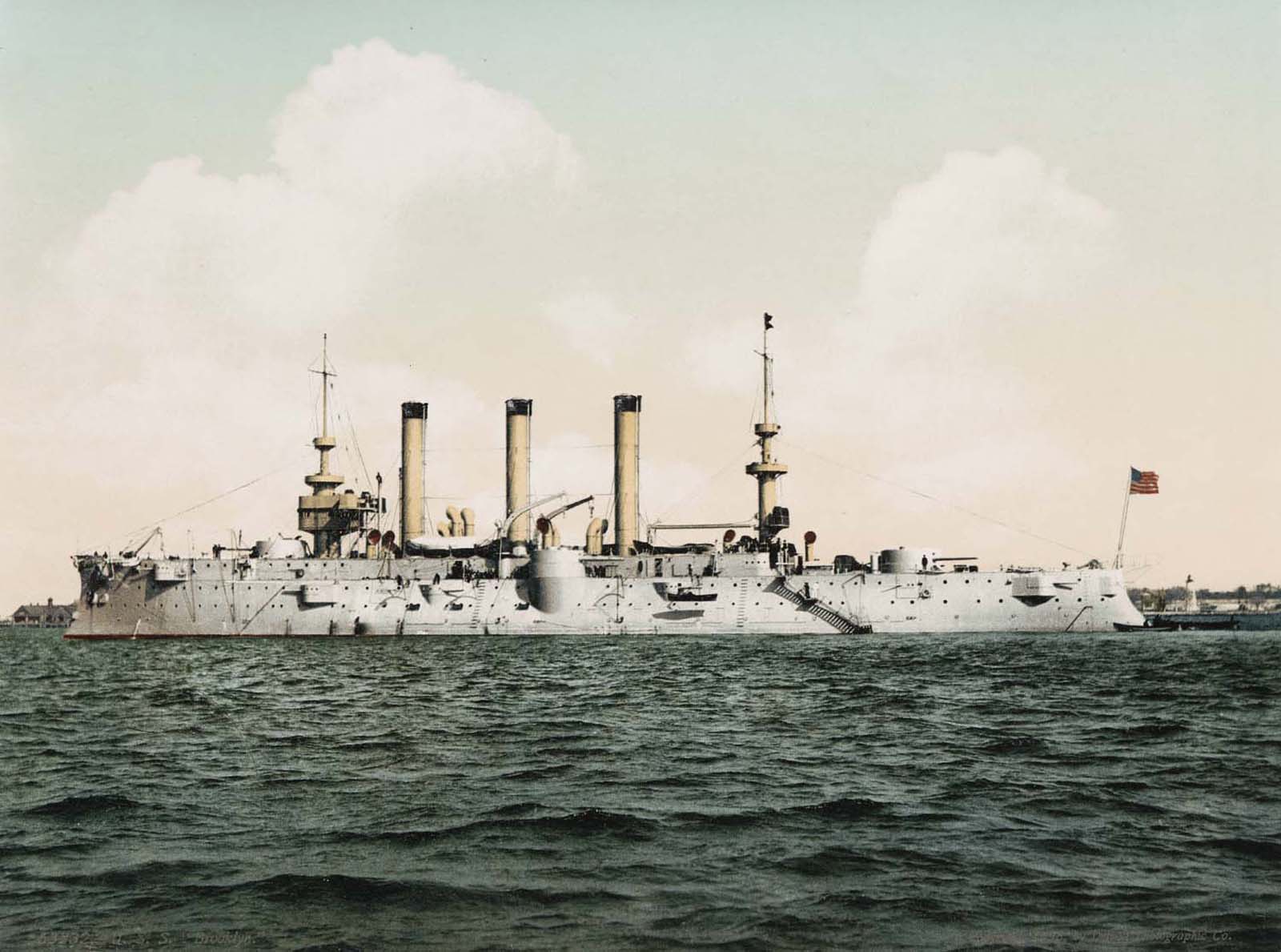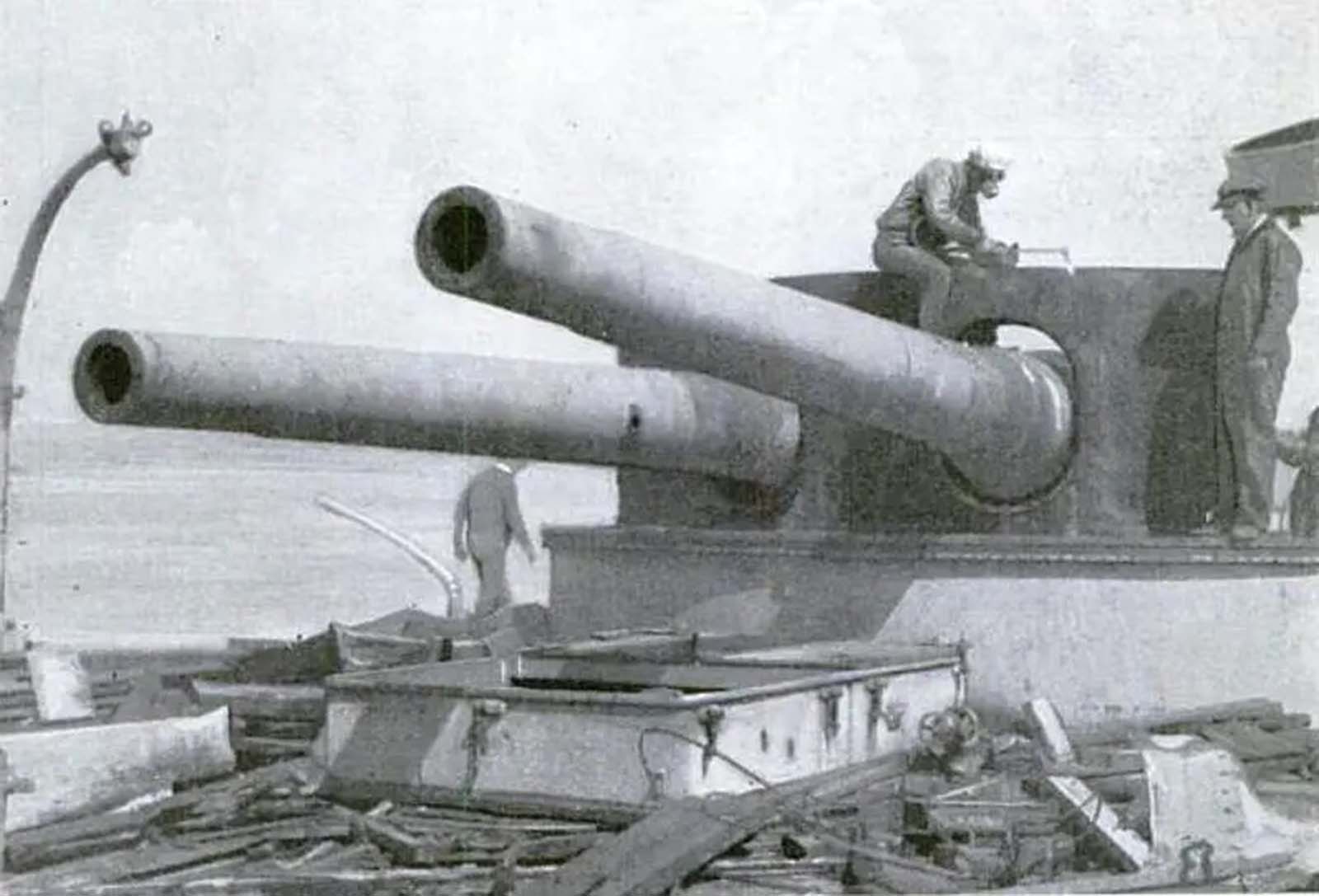USS Brooklyn was the third armored cruiser built by the United States Navy. The cruiser was named after a famous quarter in New York. Being the tallest and fastest cruiser in the American arsenal, she was recognizable by her three very tall funnels.
Despite her lozenge armament arrangement and the hull’s considerable tumblehome, USS Brooklyn had some French influences in her design. Brooklyn weighed more than 9,000 tons and had eight 8-inch guns, 12 5-inch guns, and four 6-pounders. There were 561 enlisted men and officers on board the warship. As a result, she had significantly less protection than her sister USS New York, allowing for more armament. The belt was 3 inches thick (76 mm) and 8 feet 6 inches (2.59 m) deep, of which 5 feet (1.5 m) was below the waterline. The belt only protected machinery.
Brooklyn’s first duty after commissioning was to transport members of the United States delegation to the Diamond Jubilee celebrations for Great Britain’s Queen Victoria. Upon returning to the United States, Brooklyn served on the East Coast and in the West Indies until being assigned as the “Flying Squadron” flagship on March 28, 1898. After two months, the squadron began blockading Cuba. In July 1898, USS Brooklyn was a key vessel in the Battle of Santiago, which resulted in the loss of the Spanish fleet in the Caribbean. Even though whole shots struck her 20 times, only one man was wounded and killed in Brooklyn. USS Brooklyn attended the Spanish-American War Victory Celebration at New York on October 5, 1898, and the Dewey Celebration in September 1899. It sailed for the Philippines on October 16, 1899, becoming the flagship of the Asiatic Squadron. Her involvement in the North China Relief Expedition (“Boxer Rebellion”) in 1900 was noteworthy.
The Brooklyn was decommissioned on June 23, 1908, but was recommissioned as a receiving ship at the Boston Naval Yard in 1914. She served as a member of the Neutrality Patrol after being fully recommissioned in 1915. Toward the end of that year, she was transferred to the Asiatic Station, serving as the commander-in-chief’s flagship. As a result, she has served as a diplomat, a flagship for the commander of the Asiatic Fleet, and later as commander of a destroyer squadron. On March 9, 1921, the USS Brooklyn was put out of commission for the last time, and on December 20, 1921, it was sold.
These beautiful photographs, taken by Detroit Photographic Company in 1896, give a glimpse into the inside of the warship, its armament and features, and the everyday life of sailors on board.


